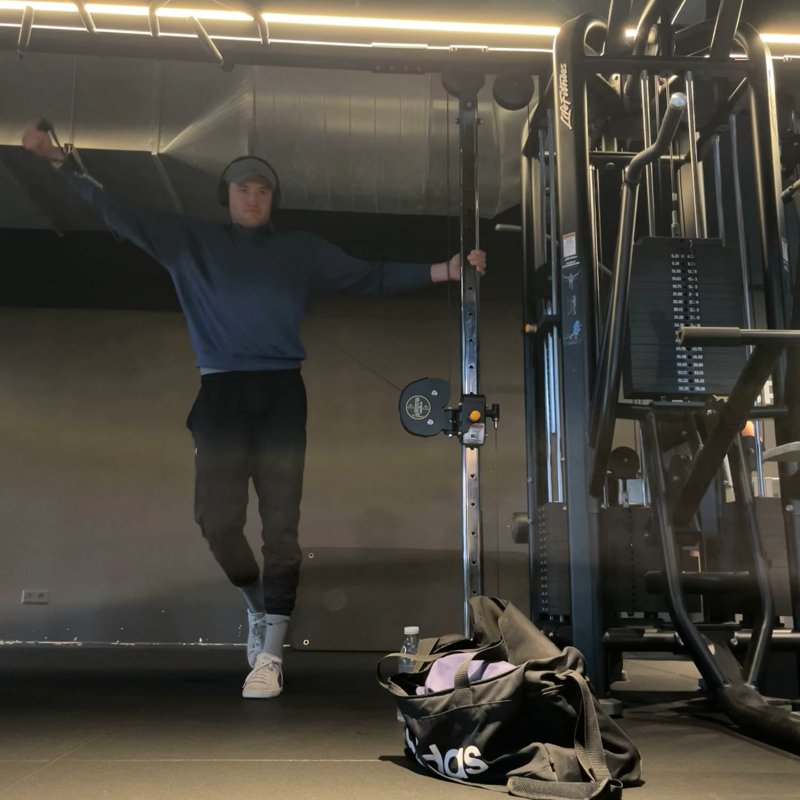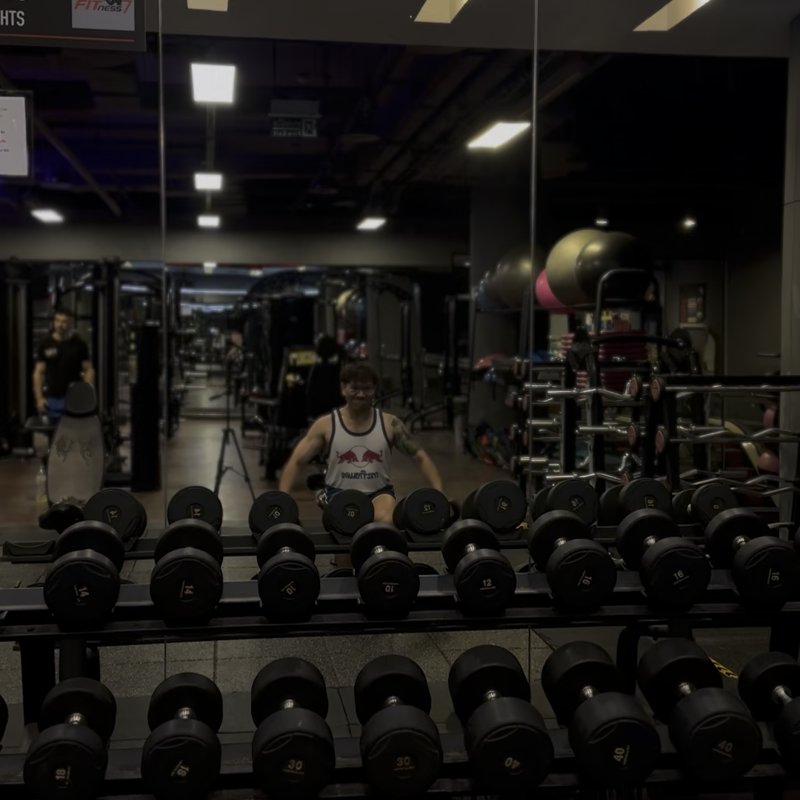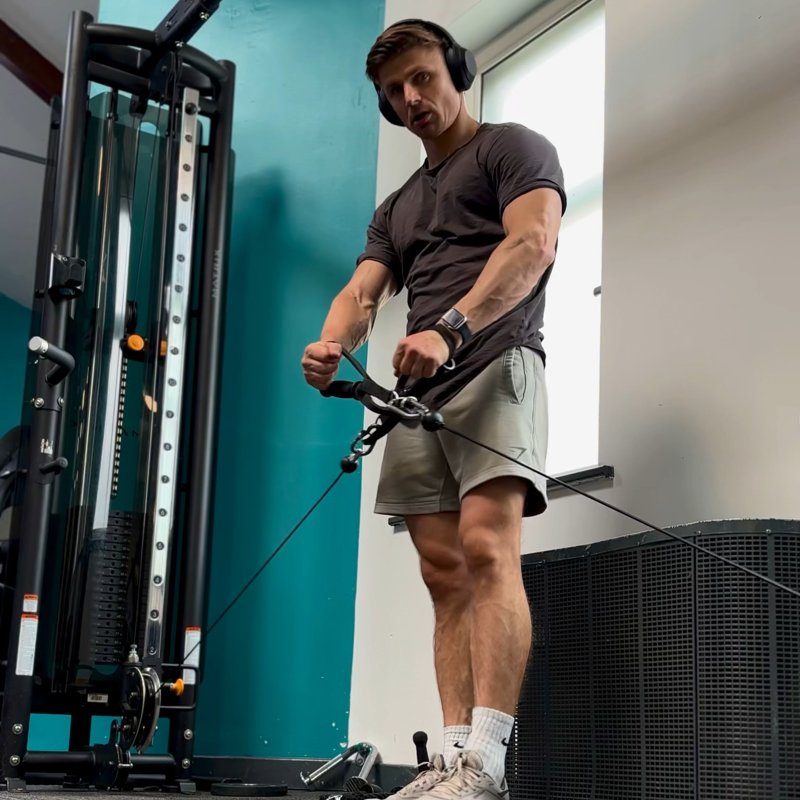One Arm Cable Lateral Raise: The Ultimate Guide
The One Arm Cable Lateral Raise is an effective isolation exercise that specifically targets the lateral head of the deltoid muscle, helping to create wider, more defined shoulders while providing constant tension throughout the movement.
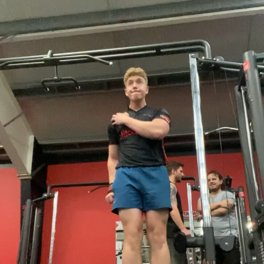
Quick Facts
Key Benefit
Targeted lateral deltoid development with constant tension
Primary Muscles
Medial Deltoids
Secondary Muscles
Abdominals, Anterior Deltoids, Traps
Equipment
cable machine
Difficulty
Beginner
Type
Strength
In This Guide
Ready to master the One Arm Cable Lateral Raise?
Track your progress, see improvements over time, and build strength consistently.
Download GravitusThe One Arm Cable Lateral Raise is a specialized shoulder exercise designed to isolate and develop the lateral (side) head of the deltoid muscle. Unlike its dumbbell counterpart, the cable version provides constant tension throughout the entire range of motion, resulting in more effective muscle stimulation. By working one arm at a time, this exercise allows for greater focus on form and mind-muscle connection while potentially identifying and addressing strength imbalances between sides. The unilateral nature also provides greater stability and control compared to performing both arms simultaneously. For bodybuilders seeking well-defined shoulder caps, fitness enthusiasts looking to improve shoulder aesthetics, or athletes wanting to enhance shoulder stability, the One Arm Cable Lateral Raise is an excellent addition to any shoulder training routine.
Benefits of One Arm Cable Lateral Raise
The One Arm Cable Lateral Raise offers several unique advantages compared to other shoulder exercises.
Constant Tension
The cable provides consistent resistance throughout the entire movement, keeping the lateral deltoid engaged even at the bottom position.
Better Mind-Muscle Connection
Working one arm at a time allows you to focus completely on the targeted muscle, enhancing neuromuscular coordination and muscle recruitment.
Balanced Development
The unilateral approach helps identify and correct strength imbalances between your left and right shoulders.
Shoulder Stability
The standing position and single-arm movement pattern improves shoulder joint stability and functional strength.
Reduced Momentum
The cable system discourages the swinging and momentum often seen with dumbbell lateral raises, ensuring the target muscles do the work.
Proper Form & Technique
Starting Position
- Stand next to a cable machine with the pulley set to the lowest position.
- Position yourself so the cable machine is on the side opposite to the arm you'll be working.
- Grasp the handle with an overhand grip (palm facing toward your body).
- Step away from the machine to create some initial tension in the cable, with your feet shoulder-width apart.
- Keep your working arm slightly bent at the elbow (about 15-20 degrees) - maintain this elbow position throughout the exercise.
- Place your non-working hand on your hip or hold onto the machine for stability.
Movement
- Keeping your torso upright and core engaged, raise your arm out to the side in a controlled manner.
- Maintain a slight bend in the elbow throughout the movement - don't straighten or bend it further during the raise.
- Lift until your arm is parallel to the floor (or slightly higher for advanced lifters), forming a "T" shape with your torso.
- Briefly pause at the top position, focusing on contracting the lateral deltoid.
- Slowly lower your arm back to the starting position with control, maintaining tension on the cable.
- Complete all repetitions on one side before switching to the other arm.
Key Form Tips
Hand Position
Keep your palm facing downward at the top of the movement rather than rotating to a thumbs-up position to maximize lateral deltoid engagement.
Elbow Height
Your elbow should always be at the same height or slightly higher than your wrist to target the lateral deltoid effectively.
Range of Motion
Raise your arm until it is parallel to the floor for optimal lateral deltoid activation. Going higher primarily engages the traps.
Control
Avoid using momentum or swinging - the movement should be deliberate and controlled.
Posture
Maintain an upright torso position; avoid leaning to counterbalance the weight.
Muscles Worked
Primary Muscles
- medial deltoids: The side portion of the shoulder muscle is the primary target, responsible for lifting the arm away from the body (abduction).
Secondary Muscles
- Anterior Deltoids: The front of the shoulder assists to a lesser degree, particularly during the initial phase of the movement.
- Supraspinatus: This rotator cuff muscle aids in the initial abduction of the arm and works with the lateral deltoid.
- traps: The middle and upper portions of the trapezius assist in stabilizing the shoulder blade during the movement.
- abdominals: The abdominals and obliques work isometrically to stabilize the torso and prevent leaning during the unilateral movement.
Common Mistakes and How to Fix Them
Using Momentum
Swinging the body or using momentum reduces the effectiveness of the exercise. Fix this by using a lighter weight, focusing on controlled movement, and keeping your core tight to prevent swaying.
Raising Arm Too High
Lifting beyond shoulder height shifts the emphasis to the trapezius instead of the lateral deltoid. Limit the range of motion to arm parallel with the floor, or only slightly higher, to maintain focus on the lateral deltoids.
Incorrect Elbow Position
Either keeping the arm completely straight or having too much bend in the elbow. Maintain a consistent 15-20 degree bend throughout the movement for optimal deltoid activation.
Shrugging the Shoulders
Elevating the shoulders during the movement engages the trapezius rather than the deltoids. Keep your shoulders down and away from your ears throughout the exercise.
Rotating the Hand
Turning the palm up (supinating) at the top of the movement. Keep your palm facing down or slightly forward throughout to better isolate the lateral deltoid.
Exercise Variations
Cable Position Variations
-

Low-Pulley Cable Lateral Raise
The standard version described above, with the cable starting from a low position.
-

Cross-Body Cable Lateral Raise
Stand with the cable in front of you rather than to your side, then draw the handle across your body and out to the side, which changes the resistance angle.
-

Cable 45-Degree Lateral Raise
Position yourself at a 45-degree angle to the cable to create a different line of pull for varied stimulation.
Advanced Variations
-

Cable Drop Set Lateral Raise
Perform a set to failure, quickly reduce the weight, and continue for additional repetitions to increase time under tension.
-

Static Hold Cable Lateral Raise
Incorporate an extended pause (3-5 seconds) at the top position to increase time under tension for the lateral deltoid.
-

1½ Cable Lateral Raise
Perform a full rep, lower halfway down, raise again to the top, then lower completely. This counts as one repetition and increases time under tension.
Frequently Asked Questions
For optimal lateral deltoid development, aim for 3-4 sets of 10-15 repetitions per arm. The lateral deltoid responds well to moderate weights with higher repetitions due to its predominance of slow-twitch muscle fibers. If your primary goal is strength, you might reduce to 8-10 reps with slightly heavier weight. Regardless of your rep range, always ensure that the last few repetitions of each set are challenging while maintaining proper form.
Generally, it's more effective to perform the One Arm Cable Lateral Raise after compound exercises like overhead presses or upright rows. This order allows you to give maximum effort to the multi-joint movements that build overall shoulder strength and mass, then use isolation exercises like lateral raises to specifically target and further fatigue the lateral deltoids. However, if your primary goal is to emphasize lateral deltoid development, you could occasionally perform this exercise first in your shoulder routine when your energy levels are highest.
If you have existing shoulder pain or a history of shoulder injuries, consult with a healthcare professional before attempting this exercise. For those with mild shoulder discomfort, modifications that may help include using a lighter weight, limiting the range of motion to a pain-free zone, or trying the cable lateral raise in a seated position for more stability. Pay special attention to form, avoiding any shrugging or internal rotation of the shoulder that could cause impingement.
The One Arm Cable Lateral Raise offers several advantages over the dumbbell version. First, it provides constant tension throughout the entire range of motion, whereas dumbbells provide maximum resistance only at the point where the arm is parallel to the floor. Second, the cable creates a more horizontal resistance vector that better matches the lateral deltoid's function. Finally, the unilateral nature allows for better focus and potentially greater range of motion. However, dumbbell lateral raises have the advantage of convenience and not requiring specialized equipment.
Video Demonstrations
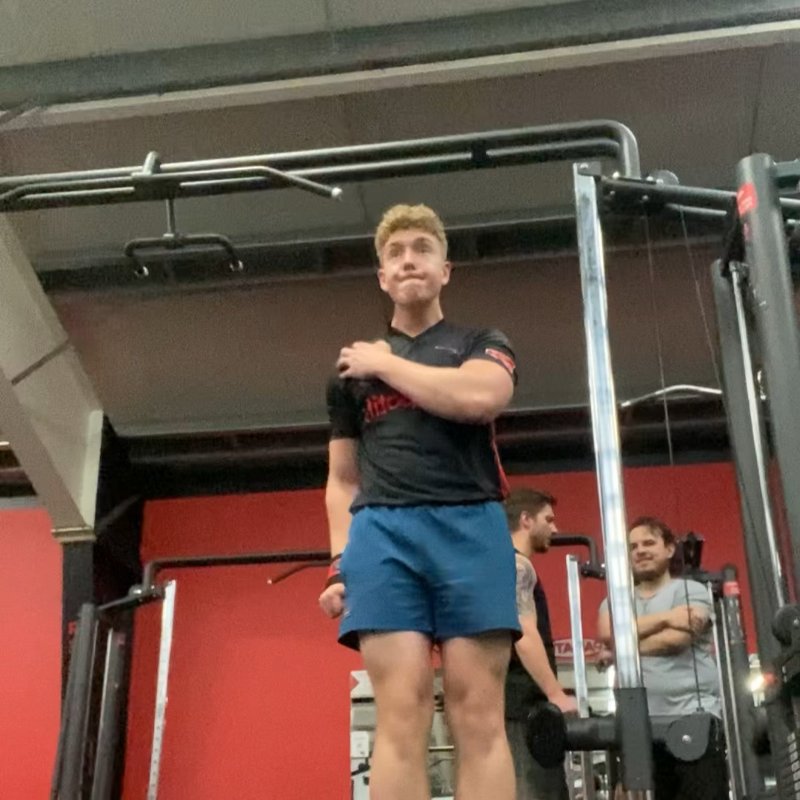
Log in to watch video demonstrations
Login to WatchTips from the Community
-

Don't go higher than shoulder height to avoid pain.
-

Lean away to focus more on the medial deltoid and reduce supraspinatus activation
-

Straddle the cable in order to keep the weight on the same plane as the shoulder. Go in front or behind your body will work the shoulder differently.
Track your progress with Gravitus
Download Gravitus to log your workouts, track your progress, and join a community of fitness enthusiasts.

Helpful Resources
One Rep Max Calculator
Find your one rep max for any exercise without maximal testing. Essential for developing effective strength training programs.
Calculate 1RMWorkout Programs
Follow structured workout programs created by fitness professionals to maximize your strength and muscle gains.
View Programs